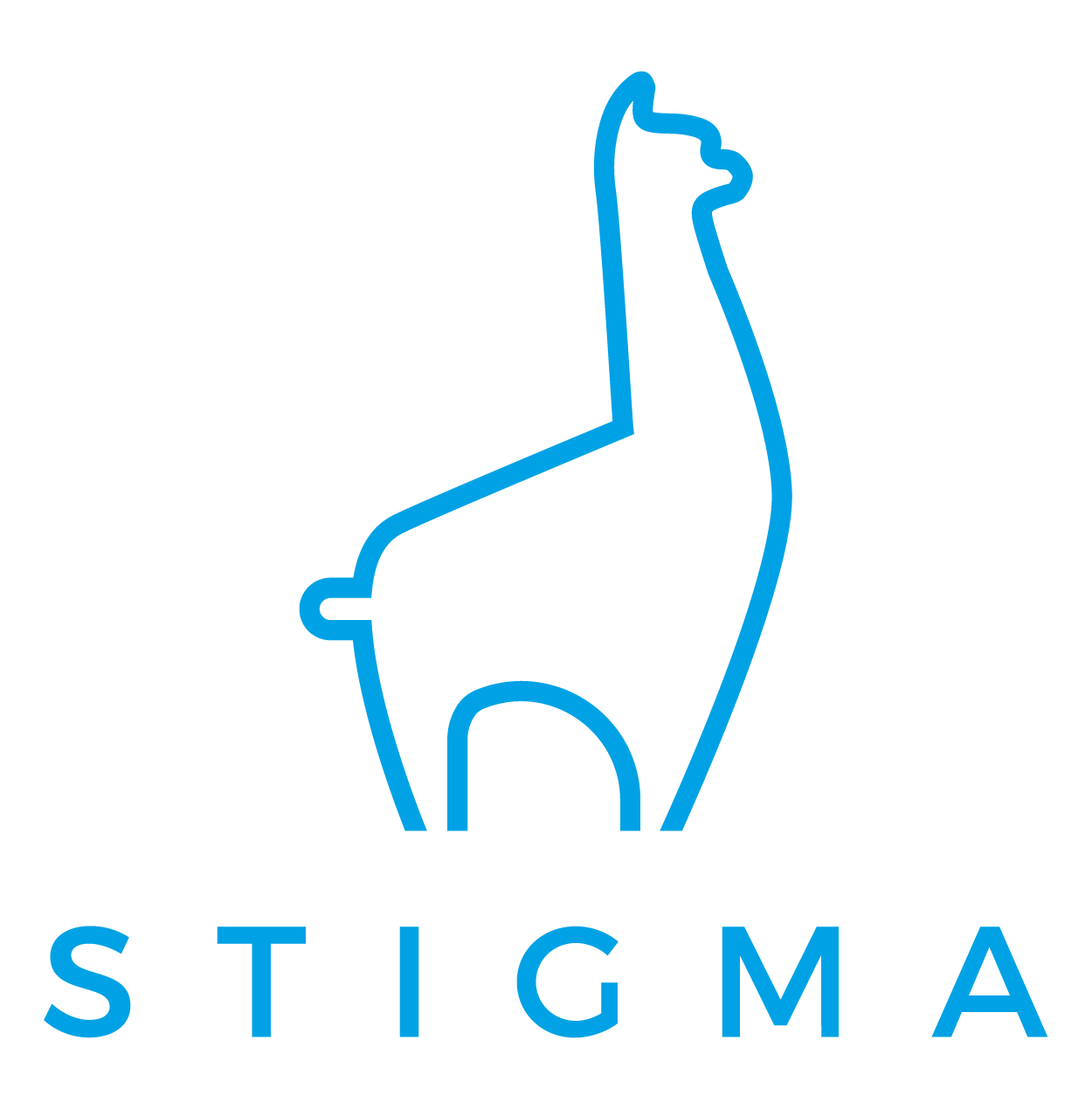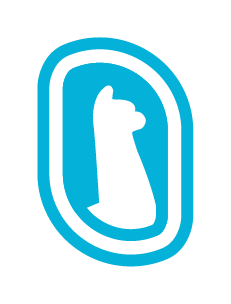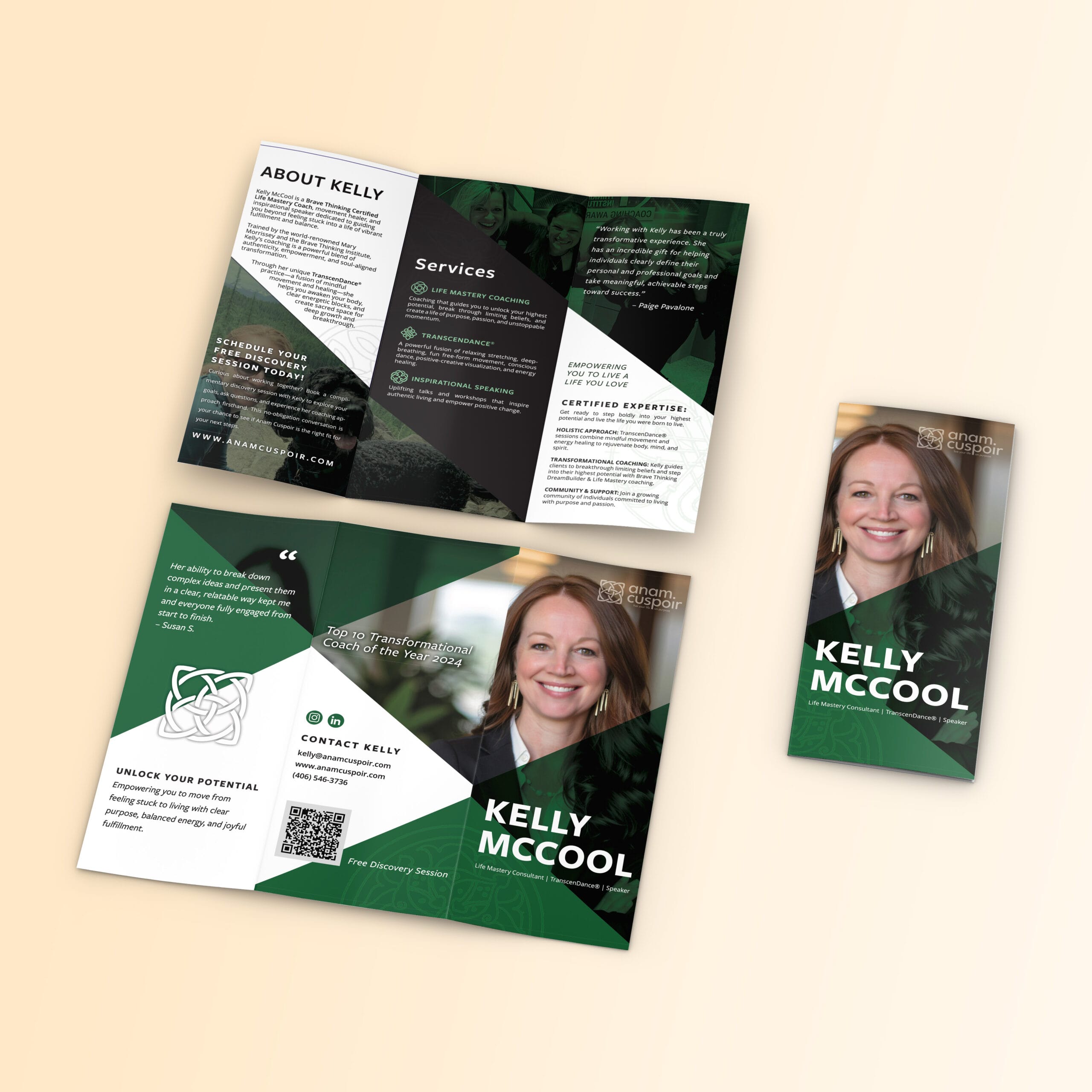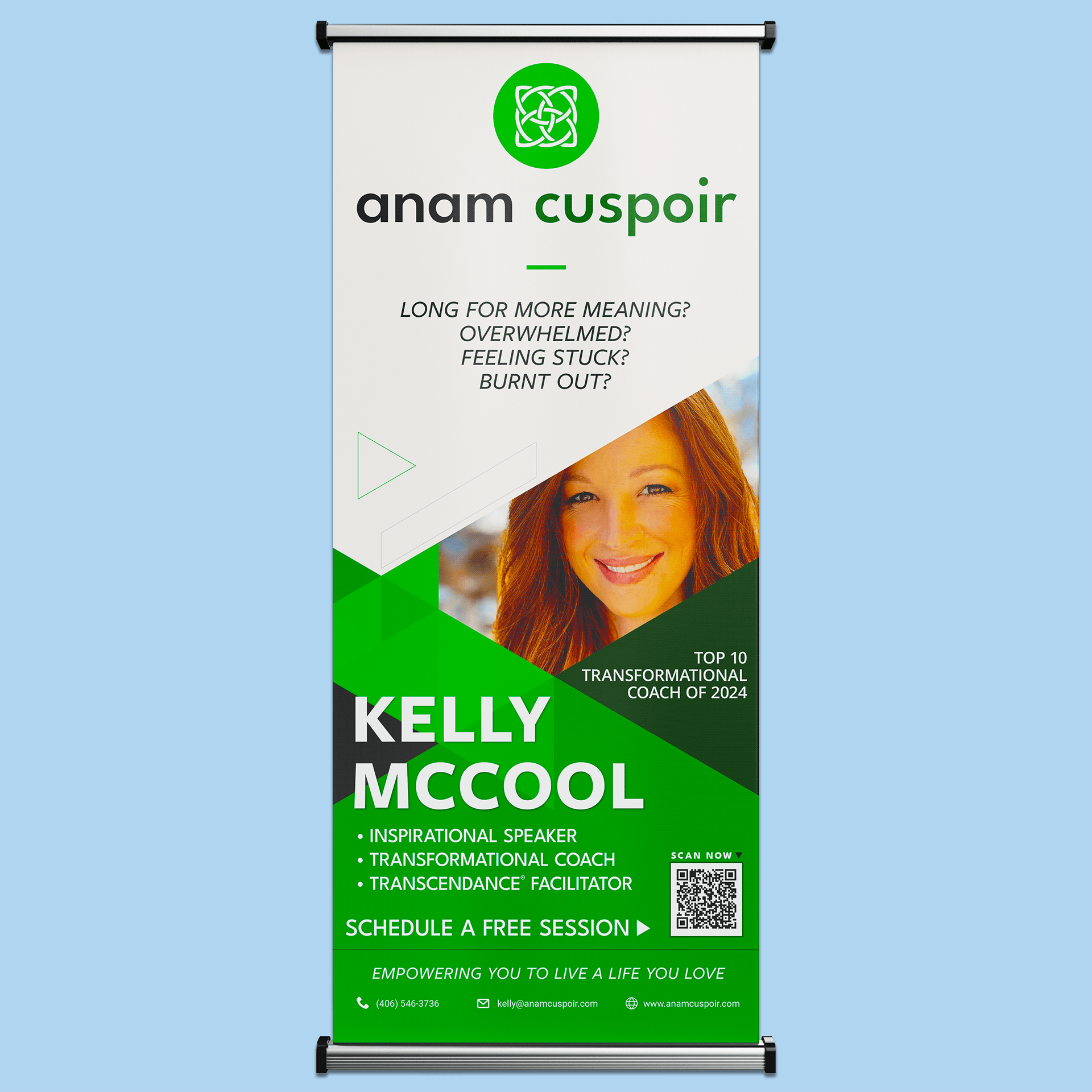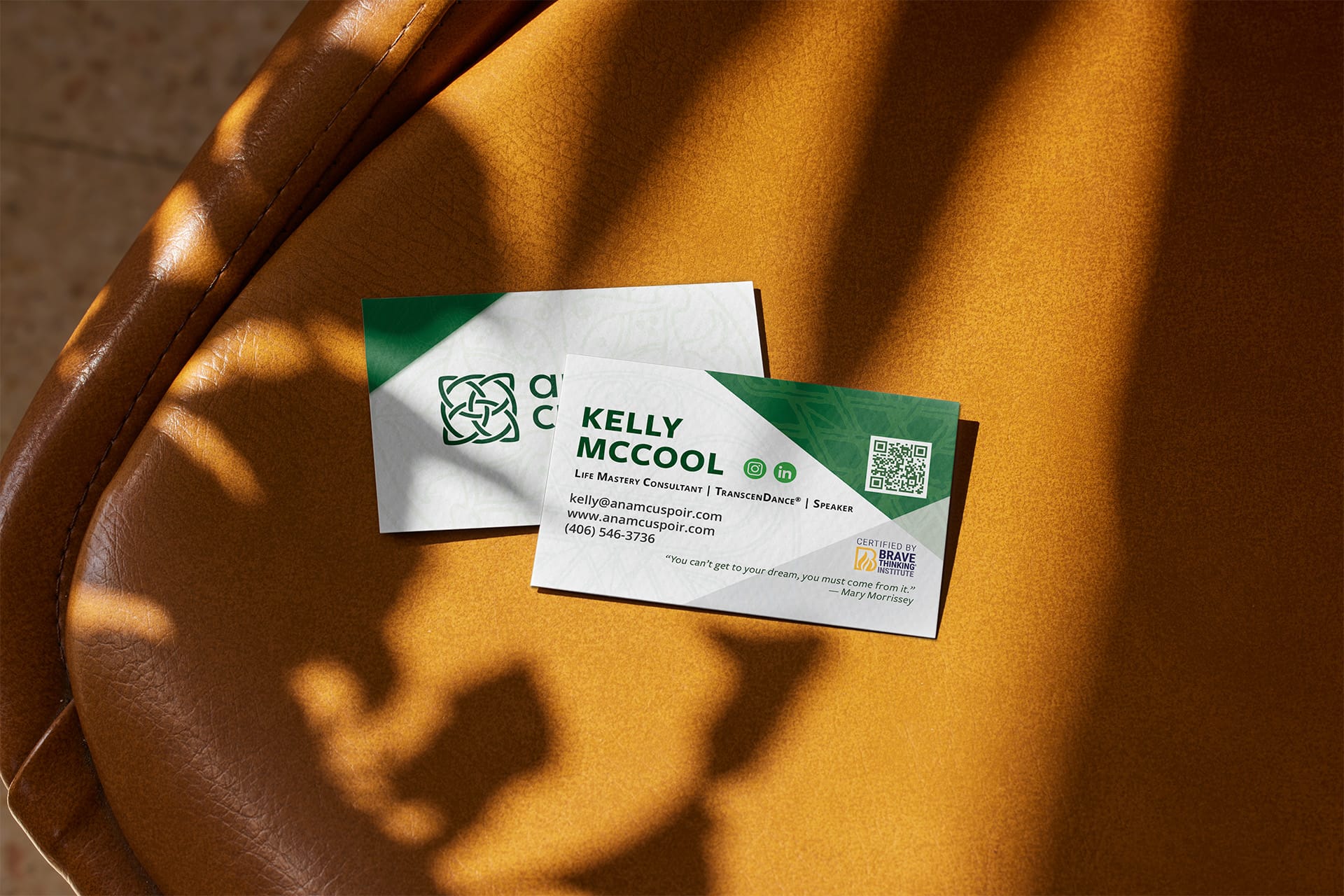Allow me a bit of an intro. Any business owner in Missoula’s hustle culture knows the grind—and also the risk of burnout, anxiety, and getting lost in the game. These are typical human experiences, but the risk goes up when you’re working 50+ hour weeks trying to build something meaningful. In fact, 42% of small business owners say they experienced burnout in just the last month. It’s no surprise that entrepreneurs can lose track of themselves amid the competition and chaos of running a business.
Late last year (2024), my business coach gave me advice that changed my approach: “Prioritize what’s already working.” One thing that was clearly working for me was networking. So I leaned into it. Sure enough, doubling down on local networking led me to partner with a couple more Missoula small business owners. Two of them were Jenna Nord Photography and Kelly McCool of Anam Cuspoir. We’ll save Jenna’s story for another blog—how we improved her website for AI SEO, conversions, and usability, plus some PR, networking, and coaching. Today, I want to share Kelly’s journey, because it’s a great case study of how work at Stigma Marketing & Development goes beyond “just marketing.”
From Networking to a 3-Month Plan

Kelly McCool is the owner of Anam Cuspoir, which is Gaelic for “soul purpose”. She is a single mom (with a lovable pooch) who is on a roll launching her life coaching and inspirational speaking business. We met at a local Missoula networking event. After a couple of follow-up emails and an in-person coffee meetup, we agreed on a 3-month partnership package to essentially “Get Her Marketing Operational.” The objective: establish her platform and presence as an emerging speaker and coach.
In the first two months, our focus was on foundational marketing setup. This included refining her website (copy tweaks, layout improvements) and setting up email marketing in Mailchimp with custom customer journeys, segmented lists, and integrated signup forms. We built out a couple of email campaigns to nurture leads coming from her site. In short, we got her basic digital marketing infrastructure in place and running. That alone was a lot of technical and creative work, but we knew that just having an operational website and email list wasn’t enough to position Kelly for success as a new solopreneur speaker.
Creating a Mini-Expo Brand Kit
In month three, we pivoted to establishing Kelly’s brand presence and credibility in a bigger way. The first step was creating a mini-expo brand kit so she could confidently show up at local events and trade shows. Kelly had an opportunity to appear at a small business expo, so we needed her to look the part of a professional speaker and coach.
We started by recreating her logo. (Her original logo file was a tiny, rough JPEG; not exactly print-ready!) With a clean, high-resolution logo in hand, we designed a cohesive set of marketing materials for her table: a full-size stand-up banner, new business cards, and a tri-fold brochure. We incorporated modern, engaging design elements and made sure everything shared a consistent look and message. We also generated QR codes to put on these materials – one QR code points people to her website’s free discovery session sign-up page, and another to a special newsletter landing page we set up for the expo. Stigma M&D handled the design and coordinated with the printer to get everything produced on time. The result was a branded toolkit that makes Kelly look as professional as she is. (Check out some of the pieces we created below!)



Kelly’s new vertical banner for events, featuring her branding and key messaging. The banner poses questions (“Long for more meaning? Overwhelmed? Feeling stuck? Burnt out?”) to resonate with passersby and highlight what she offers. It also spotlights Kelly McCool as a “Top 10 Transformational Coach of 2024” (a recognition she earned through her training institute) to build instant credibility. Of course, we included a clear call-to-action — “Schedule a Free Session” — and a QR code at the bottom so interested people can scan and connect with her on the spot.
Tri-fold brochure outlining Kelly’s story and services. We wrote and designed a tri-fold brochure that introduces Kelly’s coaching philosophy and the services she provides: Life Mastery Coaching, TranscenDance (a somatic movement program she’s certified in), and Inspirational Speaking. The brochure has an “About Kelly” section to share her personal journey (connecting with readers on a human level) and it mentions her certification by the Brave Thinking Institute (founded by Mary Morrissey) to reinforce her credentials. We also listed contact info and embedded another QR code for easy sign-ups. This give-away item provides tangible info for anyone who chats with her at the booth, so they can remember her and follow up later.
We created custom business cards for Kelly as well, carrying the same design theme — think clean layout, her new logo, and another inspiring quote. All of these pieces together established a consistent brand feel for Kelly. When you see her booth now, everything—from the large banner down to the cards—tells a cohesive story about who she is and how she can help “courageous souls break free from the stories that keep them stuck.”
Expo Show Strategy & Intentional Networking
Now, designing nice banners and brochures is one thing, but let’s talk strategy. Expos and trade shows (and even smaller networking events) can be gold mines or landmines for a business. Success really depends on your approach and preparation. I often think of an expo booth like a live website – there’s a visitor journey happening, and you need to guide it. You want to move people from unfamiliar to familiar, and then to engaged, quickly. There are plenty of ways this can go wrong (gaps, broken links, awkward interactions) and we tried to help Kelly avoid the common pitfalls. Below are some of the key principles we kept in mind for her expo debut:

- Grab attention with clear messaging: Attendees should grasp who you are and what you offer within seconds of glancing at your booth. Use bold headlines, concise taglines, and strong visuals to communicate what you do fast. One trade show guide suggests your signage should captivate someone from 20 feet away in about 3 seconds (pipmetroindy.com). We followed the rule-of-thumb that you need lettering 1 inch tall for every 10 feet of viewing distance to ensure Kelly’s banner text was legible from a distance. The goal was to make passersby want to know more at a glance.
- Don’t just wait—engage people: You need more than a “hope they come to me” mindset. Standing behind the table, scrolling your phone won’t cut it. Instead, we coached Kelly to stand in front of her booth, smile, make eye contact, and say hello to people walking by. In my own best expo experience (at a Las Vegas convention), I barely stayed at my booth at all—I walked the floor meeting others and networking. After a few days, I had over 90 leads with notes, just from proactively talking to people. The takeaway: Be proactive and initiate conversations. Even at a small local expo, don’t be shy—everyone is there to connect.
- Add creative, budget-friendly flair: A little originality can draw a crowd even on a shoestring budget. Most booths are literally boxes with a draped table, so anything novel will stand out. We brainstormed fun touches like maybe a small wacky waving inflatable tube man (those funny dancing windsocks you see at car lots) or a looping slideshow on a screen with music. Even a bowl of candy can work as an icebreaker (who doesn’t slow down for chocolate?), but think beyond the obvious. The idea is to get eyes on you.
Remember, as Seth Godin famously said: “In a busy marketplace, not standing out is the same as being invisible.” So don’t be afraid to be a little different. You don’t need a big budget for this—just creativity and the willingness to be a purple cow in a field of brown cows. - Put effort into design (within your means): Don’t be lazy about your booth visuals. You can absolutely DIY a lot these days (one reason the design industry is changing), but there’s still a difference between throwing something together and designing with intent. We made sure Kelly’s signage had high-contrast colors, clean fonts (nothing too fancy or hard to read), and no clutter. As a rule, we kept to a few fonts and a clear hierarchy of information. Her main message is big and simple; detailed info is smaller on the brochure. You don’t need a $50,000 trade show display to look good; a well-thought-out banner and neat table can do the job. It’s about clarity and professionalism. (No pixelated logos, no Comic Sans or Papyrus font, please!)
- Attract your target audience (not just anyone with a pulse): We reminded Kelly to think about why her target audience would stop at her booth. It’s easy to lure in random folks with free swag or a prize wheel, but are they qualified leads or just swag collectors? A brightly colored, fun booth with tons of giveaways might give you a lot of traffic, but then you’ll spend weeks sifting through business cards from people who were never genuinely interested in life coaching. Instead, design your booth and messaging to speak to those who really need what you offer.
- Be authentic and approachable: Networking in person is about human connection. We’ve all been to expo booths where the rep is either too aggressive or totally disinterested. Don’t be that person. I told Kelly: be yourself, be warm, and don’t come off as desperate for a sale. Body language matters – stand up straight but relaxed, keep your arms uncrossed, and shoulders down. Smile and listen more than you talk. Ask questions about the person you’re speaking with (“What brought you here?” “What are you looking for today?”) rather than launching into a pitch. People can sense a mile away if you’re just trying to sell them something versus genuinely engaging.
- Follow up (the real goldmine is after the event): Finally, we hammered this point: the expo isn’t over when you pack up your booth. If you don’t follow up with the contacts you made, all your effort could be wasted. Astonishingly, an estimated 79% of trade show leads never convert simply because there’s no follow-up (american-image.com). Even worse, some studies say 80% of exhibitors don’t bother to follow up at all (american-image.com). The aim is to do this within a few days of the event while she’s still fresh in their memory. Prompt, sincere follow-up is how those 5-minute booth chats turn into actual clients or collaborators. (The fortune is truly in the follow-up.)
By the time we finished prepping her expo kit and strategy, Kelly felt ready to roll. But building her event presence was only one part of establishing credibility. We didn’t stop there.
Local PR and “Credibility Stacking”
The second avenue we’re pursuing for Kelly is a local PR and speaking plan to start lining up opportunities for her to speak and get noticed. One of the strategies I’m big on (and that we’re implementing with all Stigma M&D partners) is something I like to call “credibility stacking.” It’s not a new idea in marketing, but what’s unique in Stigma’s model is how we apply it both in real-life networking and in the digital realm (especially for AI-driven search visibility). The gist of credibility stacking is to build authentic credibility step by step, so that over time you accumulate a stack of trust signals: testimonials, press mentions, speaking gigs, collaborations, etc. Each piece might start small, but they add up to a reputation that opens bigger and bigger doors.

“Dream big. Start small. But most of all, start.”
— Simon Sinek
Kelly’s dream is to be a sought-after speaker and coach with a full roster of clients. To get there, we’re starting small and local. Many people resist this stage — they might hope that a fancy website, a few social media posts, and maybe a pricey training certification will magically land them a TED Talk or a huge paid gig. Hate to break it to them: that’s not usually how it works. The much more reliable path is to put in the work and deliberately put yourself out there. Public speaking is one of those fields where you can begin with free, low-stakes opportunities and gradually work your way up. With each talk or event, you gain experience and a bit more clout for the next one.
For Kelly, we’ve laid out a plan to get her in front of audiences in increasing increments. That means in the coming weeks we’ll be:
- Researching local events and groups – Missoula has a wealth of gatherings: think Rotary meetings, Chamber of Commerce luncheons, Meetups, library workshops, women’s networking groups, you name it. We’re identifying forums where a talk about overcoming burnout or finding life/work balance would be relevant. Even a 15-minute slot on a panel or a free workshop at a community center is a chance for Kelly to shine.
- Reaching out and pitching Kelly as a speaker – We’re going to help her contact event organizers with a concise pitch. It will highlight her unique angle (for example, her background in somatic movement with TranscenDance, which sets her apart from run-of-the-mill life coaches) and how her message can benefit their audience. This includes offering to speak for free at first. Yes, free – because the goal at this stage is experience and exposure, not immediate revenue. Each “yes” she gets is a chance to practice and improve her speaking skills and to collect a piece of credibility (testimonials, photos, etc.).
- Doing a bit of PR – We’ll craft some press releases to send to local media about her business launch and any noteworthy events (e.g. “Missoula Life Coach to Speak at XYZ Conference”). Getting a little blurb in the local news or on community websites can help raise her profile. We also plan to pitch her story to a couple of niche blogs/podcasts (for instance, entrepreneurship or wellness podcasts that might interview her about burnout and work-life balance). Each media mention is another credibility brick in the wall (and often provides an SEO-beneficial backlink to her website too).
- Guest writing and collaborations – Along with speaking, writing is a great credibility booster. We’re looking at perhaps writing a guest article under Kelly’s name for a local business magazine or popular blog (something like “5 Tips to Avoid Burnout in Hustle Culture” – which she can speak to personally). Additionally, we’ll leverage Stigma’s network to see if any of our contacts (or clients) need a workshop facilitator or want a guest speaker for their team offsite, etc. The idea is to plug Kelly into existing platforms that have an audience, so she can borrow those spotlights for a moment.

As these activities get going, we’ll make sure to capture the outcomes. That means whenever Kelly does speak, we’ll try to get photos or video of her on stage. We’ll gather any feedback or quotes from organizers. All of this becomes content for her speaker portfolio. We can add a “Media & Speaking” section to her website listing the events she’s spoken at, put up highlight videos on Instagram, and share with potential decision makers.
Over time, someone who checks out Kelly online will no longer see “new coach with little experience” but instead “wow, this person is everywhere – she’s spoken at these 5 events, been on the radio, featured in the paper….” That’s credibility stacking in action. It builds social proof that she knows her stuff and is in demand.
Luckily, Missoula is a perfect playground for this strategy. The community here is vibrant and supportive. There are open mic nights, local conferences, and groups meeting up practically every week. One of the many things I love about Missoula is if you’re an expert (or aspiring expert) who wants to share knowledge, there’s a stage for you (and if you’re bored here, it’s your own fault, honestly!). We’re going to help Kelly tap into this community ecosystem. And by the way, most of these credibility-building efforts cost little to nothing besides time and courage.
This is all happening on a modest marketing & development retainer budget. Talk about ROI: the value of a new connection or a piece of content that can be used for years is huge compared to, say, burning the same budget on a short-lived ad campaign for “exposure.” This is why I like to say Stigma Marketing & Development does marketing backwards – we focus on foundational relationships, trust, and authenticity first, rather than hype and vanity metrics. We believe if you get the credibility and substance authentically right, the leads and sales will follow in a more natural way.
After almost three months of working together, Kelly is well on her way. She has a professional brand presence (online and offline), a plan to make a splash at her first expo, and a growing pipeline of speaking opportunities to build her reputation. And importantly, she hasn’t lost sight of her mission during all this hustle: helping people find meaning and balance in their lives.

If you’re in the Missoula area (or even beyond, thanks to the digital world) and you’re looking for a coach who walks the talk when it comes to healthy work-life balance and purposeful living, Kelly McCool of Anam Cuspoir is someone you should check out. She’s officially certified as a Life Mastery Consultant by the Brave Thinking Institute, and she brings a ton of heart and personal experience to her coaching. And if you need an engaging speaker for an event – someone who can speak about overcoming burnout, finding your passion, and thriving without losing your sanity – Kelly is an undiscovered gem ready to shine. You can learn more about her and get in touch through her website: anamcuspoir.com.
This case with Kelly has been a rewarding example of how a marketing & development partnership can empower a solopreneur beyond just design. By building her brand assets, sharpening her strategy for events, and stacking her credibility piece by piece, we’re helping set Kelly up for long-term success. It’s the kind of holistic, hands-on collaboration that fires me up as a consultant. If you enjoyed this behind-the-scenes look or have any questions about the process, drop a comment or get in touch – I’m always happy to nerd out about marketing & development!
